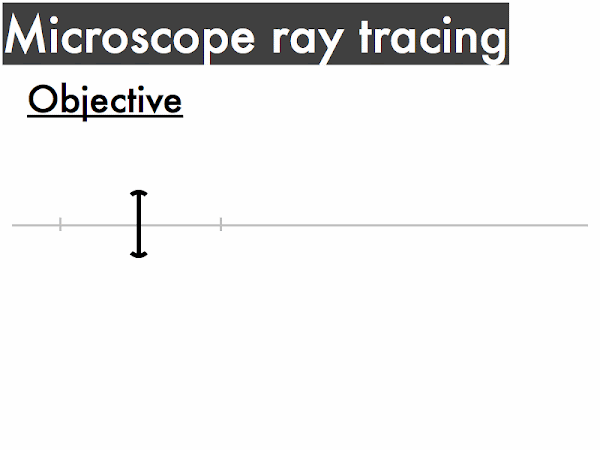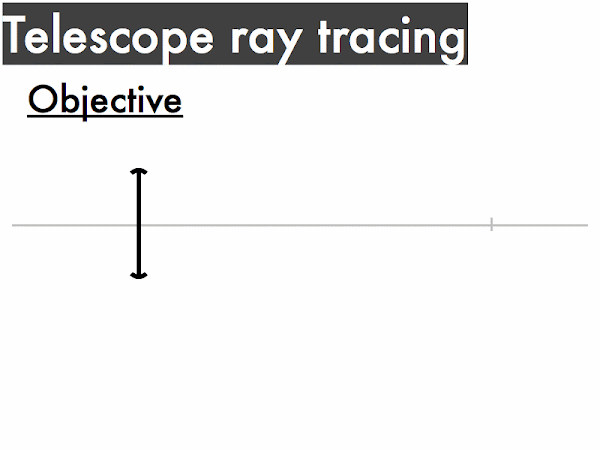Cuesta College, San Luis Obispo, CA
Students have a bi-weekly online reading assignment (hosted by SurveyMonkey.com), where they answer questions based on reading their textbook, material covered in previous lectures, opinion questions, and/or asking (anonymous) questions or making (anonymous) comments. Full credit is given for completing the online reading assignment before next week's lecture, regardless if whether their answers are correct/incorrect. Selected results/questions/comments are addressed by the instructor at the start of the following lecture.
The following questions were asked on reading textbook chapters and previewing presentations on optical instruments and interference.

Selected/edited responses are given below.
Describe what you understand from the assigned textbook reading or presentation preview. Your description (2-3 sentences) should specifically demonstrate your level of understanding.
"Similar to a magnifying glass, microscopes and telescopes make objects appear larger by increasing the angular size of the final image produced. They exponentially increase the angular size by pairing two converging lenses with different focal lengths."
"This section was on different optical instruments. Microscopes and telescopes have a tube, objective lens, and an eye piece. For the microscope ray tracing, the object 1 is placed just outside of the focal point of the objective, which makes a greatly enlarged real image 1. An for the telescope ray tracing, the object 1 is extremely distant, such that its rays are essentially parallel."
"What I was able to understand from tonight reading assignment was that microscopes and telescopes have similar qualities. Both microscopes and telescopes have converging lens as well as being a two lens system. I also understand that they are different because the microscope have a short focal length and the telescope has a short eyepiece focal length as well as long objective focal length. Depending how big or small a telescope or a microscope is this will optimize angular magnification."
"Constructive or destructive interference depends on both the source phases and the path difference. If two sources are in-phase and each wave travels one wavelength longer than the other, then constructive interference occurs."
"The microscope and telescope magnification equations and how to solve for the magnification for each. I also understand that speakers can get either constructive or destructive interference; they come out with a certain path differences ∆l. For two in-phase speakers where one wave travels a half-wavelength longer than the other, the path difference is half the wavelength and as a result crests and troughs line up with the other speaker's troughs and crests, resulting in destructive interference."
"I don't fully understand anything in this unit."
"I honestly am still not caught up with this stuff. I am currently retracing the ray tracings to get better at those."
Describe what you found confusing from the assigned textbook reading or presentation preview. Your description (2-3 sentences) should specifically identify the concept(s) that you do not understand.
"I don't understand how to do the tracings for the other types of optical instruments."
"I don't understand what it means for an object to be 'located near infinity.' Is infinity supposed to be an actual location, or is this just different use of terminology that I am not familiar with?"
"I'm having a little trouble still with wrapping my head around how microscopes and telescopes work."
"What I found confusing about tonight's reading assignments were the equations for the telescope and microscope. I was unable to understand what each variable meant."
"All of this, but it's not too bad--reading makes everything seem confusing; the class discussions always clear things up."
"What is confusing me is when we have to do the ray tracing for the second step of the two step problem. I don't know where we are supposed to put object 2 (image 1) in regards to the lens."
"I was confused about the telescope/microscope ray tracings and how to properly identify which one is which. I also had a difficult time trying to figure out how interfering waves worked how constructive an destructive waves work."
Identify the type for each of these lenses. (Only correct responses shown.)
Microscope objective: converging [86%]
Microscope eyepiece: converging [55%]
Telescope objective: converging [62%]
Telescope eyepiece: converging [62%]


Identify the ray tracing for each of these lenses. (Only correct responses shown.)
Microscope objective: ray tracing 2 [45%]
Microscope eyepiece: ray tracing 3 (or 4) [37%]
Telescope objective: ray tracing 1 [21%]
Telescope eyepiece: ray tracing 3 (or 4) [38%]

A (compound) microscope should have a __________ focal length objective lens and a ___________ focal length eyepiece lens in order to maximize its angular magnification.
short; short. ************ [12] short; long. ********* [9] long; short. ** [2] long; long. * [1] (Unsure/lost/guessing/help!) ***** [5]
A telescope should have a __________ focal length objective lens and a ___________ focal length eyepiece lens in order to maximize its angular magnification.
short; short. [0] short; long. *** [3] long; short. ****************** [18] long; long. *** [3] (Unsure/lost/guessing/help!) ***** [5]

1: in phase sources; whole wavelength path difference; constructive [79%]
2: in phase sources; half wavelength path difference; destructive [35%]
3: in phase sources; whole wavelength path difference; constructive [31%]
4: out of phase sources; whole wavelength path difference; destructive [38%]
5: out of phase sources; half wavelength path difference; constructive [44%]
6: out of phase sources; whole wavelength path difference; destructive [10%]
Ask the instructor an anonymous question, or make a comment. Selected questions/comments may be discussed in class.
"This is some cool stuff."
Need help identifying which focal length is necessary for maximum angular magnification."
"Examples of microscope/telescope objective/eyepiece ray tracings would be helpful."
"Who does your website? Maybe get a student graphic designer to help make it read better."
No comments:
Post a Comment